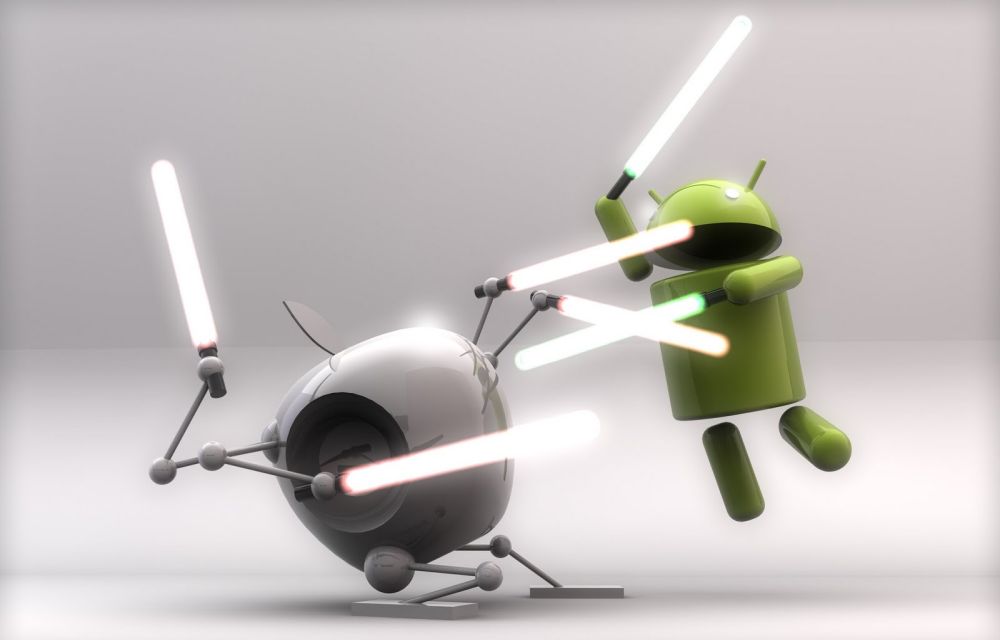
The War between smartphones has already been led by iOS and Android and it just keeps on getting better with every version they release! There’s an unending debate who’s the best among the both. No doubt Apple started off very well and served as an ideal operating system for the ‘it’ smartphone. Whereas, Android started off in 2005, and though it was quite sluggish for being the operating system most smartphones would want to, it evolved pretty well from an ugly duckling to a beautiful swan!
iOS took a beating when Android flourished and was given a whole new look and feel to it, thus expanding its boundaries. More and more people started using Android based smartphones because the operating system was much much more flexible and easy to maintain, with access to unlimited applications from Google Play Store. Anyhow, Apple launched iOS 7 and the world seemed crazy like kids do when left in a candy store!
Let’s take a look at the features of Android and iOS 7
Easy Access To Settings
Android has had quick access to control the settings; a feature dominant for quite a long time. But iOS 7 launched Control Center that lets you change the settings with just one swipe. Both the operating systems allow and make it easy for the user to accomplish the task, i.e. change the settings easily. The only difference is that on Android, the settings panel pop up from top to bottom rather than from bottom to up as that in iOS7.
Customization
Android is excellent when it comes to customization. It lets the users modify and play with the way they want their smartphone’s interface to be like. Android simply provides flexibility to go ahead with customization with the help of third party applications. Whereas iOS is much stricter, one can’t really customize or change the way their iPhone looks. The only way to do is by jailbreaking it, which means you can then install third party applications to revamp it.
Convenient Multitasking
Multitasking and switching between various applications become much easier and convenient in iOS7, though it was Android who started it. In android devices, double tapping the home button brings up the vertical list of apps. Whereas in iPhone, the opened apps are set up from left-right, making the preview far more real and live! Still in both the Operating systems, multitasking, or let’s say app switching suffers a bit because sometimes the app gets closed, a game gets aborted; switching affects the app!
Robust Camera
Android might be still new, but Apple’s Camera has been the pioneer in smartphone cam’s, and so it is still! Apple’s camera is strong and robust, at the same time it provides clean and sharp images, and the inbuilt photo management is great. Android claims to have a lot on its plate when it comes to the camera, though it is adequate, it is not excellent or extraordinary. Android does provide some great clicks, but if compared to iPhone’s shots, it’s an uncalled match because iPhone wins.
Device Security
Apple has its own extremely powerful app “Find My iPhone”, which adds points to iOS’s bag. With this application one can easily find and locate the stolen, lost iPhone’s, talking of which the service triggers an alarm when the iPhone is tried to be wiped off the data or if the sim is changed or removed. It’s quite a beneficial application if you have lost your iPhone. Similarly, Google launched its very own take on Apple’s ‘Find My iPhone’, i.e. Android’s Device Manager that serves the same goal. But Apple has scored more marks by launching Fingerprint scanning system for Home Button.
Conclusion!
Though both the operating systems are incredible on their own, it’s harder to say which one is better than the other, simply because it depends on the users; what they like! Apple doesn’t really score much in the customization area, whereas Android is flexible enough to let the user do that. Similarly, Android is lagging bit behind in terms of Security when compared to Apple’s security app and fingerprint scanning. At last, it comes down to the point of personal preferences and choices.